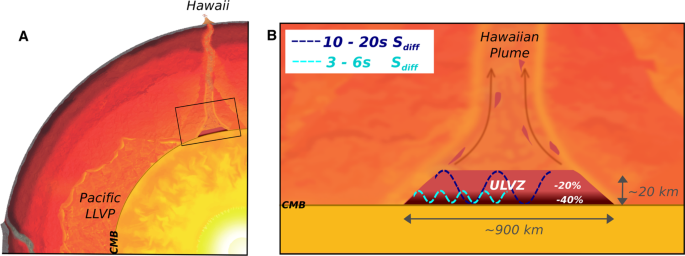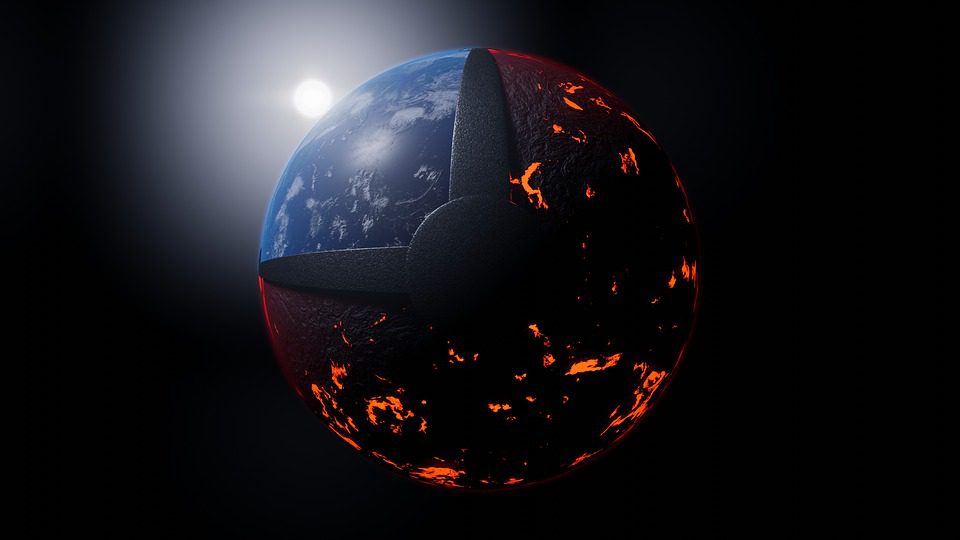This is the first instance that researchers have examined an ultra-low-velocity area thoroughly. Approximately 3,000 km (1,864 mi) under the ground, these mysterious clumps of rock are located.
Due to the general way shock waves travel through into the Earth, we understand they exist even though studying them at that level is impossible. In these zones, seismic waves are slowed to a crawl as they travel across.
A photograph presented in a recent research shows a zone under Hawaii in considerably more detail than previous photos of similar zones were able to disclose, revealing a unique perspective into our planet’s internal dynamics and its past.

(Credit: Nature Communications, 2022 – https://doi.org/10.1038/s41467-022-30502-5)
A high-frequency signal obtained as seismic waves swept across the ultra-low velocity region was subjected to the most advanced computer simulation methods to generate the picture. In terms of examining Earth’s iron-nickel core’s border with the mantle surrounding, it allows scientists to see the rock pocket at km scales.
Ultra-low-velocity zones may play a role in earthquakes, eruptions, and other forms of geological phenomena, and researchers are eager to understand more about their role. This increased density may be caused by an abundance of iron in these odd zones, and determining whether or not this is the case might provide light on how Earth originated but also how its core functions now.
Researchers have also discovered a connection between volcanic centers like Hawaii & Iceland’s ultra-low velocity sectors. Some believe that these spots are created by material rising from the center to the top. Researchers in Hawaii are also looking for signs of core leakage in basaltic rocks found on the surface there, and improved photography of such profound and enigmatic zones might aid in that area as well.
When it comes to studying ultra-low velocity zones, there are certain limitations imposed by geological features like as earthquake activity and the location of seismographs, but the research community is eager to extend its high definition imaging advancements to other subsurface regions of the Earth.












Leave a Reply